Conversational AI Chatbot Google Gemini (formerly known as Bard)

What is Google Gemini (formerly known as Bard)?
Google Gemini, previously known as Bard, is an AI chat tool developed by Google. It uses natural language processing (NLP) and machine learning technologies to simulate human conversations. Besides enhancing Google Search functionality, Gemini can also be integrated into websites, messaging platforms, or applications to provide natural text responses. Gemini is a set of multimodal large language models (LLMs) capable of understanding language, audio, code, and video content.
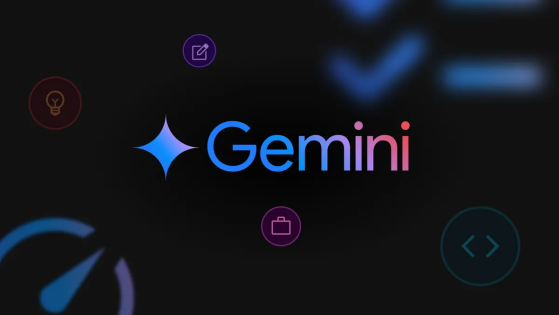
Developed by Google's DeepMind division under Alphabet, Gemini was first released on December 6, 2023, with Google co-founder Sergey Brin and other employees participating in its development. Upon release, Gemini was Google's most advanced LLM, supporting Bard before it was renamed and replaced the company's Pathways Language Model (Palm 2). Like Palm 2, Gemini is integrated into various Google technologies to provide generative AI functionalities.
Gemini incorporates NLP capabilities, offering the ability to understand and process language. It's also used to comprehend input queries and data. It can recognize images, enabling it to parse complex visual effects such as charts and numbers without the need for external optical character recognition (OCR). Additionally, it supports extensive multilingual functionality for translation tasks and operations across different languages. Unlike previous AI models from Google, Gemini itself is multimodal, trained on datasets spanning multiple data types end-to-end. As a multimodal model, Gemini enables cross-modal reasoning, meaning it can reason across different types of input data including audio, images, and text. For instance, Gemini can understand handwritten notes, diagrams, and charts to solve complex problems. The Gemini architecture supports the extraction of interleaved sequences of text, images, audio waveforms, and video frames.
Why was Bard renamed to Gemini?
On February 8, 2024, Bard was renamed to Gemini. Gemini had already been the LLM course for Bard. Some believe that renaming the platform to Gemini may shift attention away from the name Bard and the criticisms it faced at its initial release. Additionally, the renaming helps to simplify Google's AI strategy, highlighting the success of the Gemini LLM. From a marketing perspective, renaming also helps to enhance Google's brand image in the AI field.
How does Google Gemini operate?
Google Gemini operates by firstly being trained on vast amounts of data. After training, the model utilizes various neural network technologies to understand content, answer questions, generate text, and produce output. Specifically, the Gemini LLM uses a neural network architecture based on the Transformer model. The Gemini architecture has been enhanced to handle long contextual sequences of different data types including text, audio, and video. Google DeepMind employs efficient attention mechanisms in the Transformer decoder to help the model process long contexts across different modalities.
The Gemini model has been trained on multiple multimodal and multilingual datasets of text, images, audio, and video from Google DeepMind and uses advanced data filtering to optimize training. As different Gemini models are deployed to support specific Google services, there is a targeted fine-tuning process to further optimize the model for particular use cases. Gemini benefits from the use of Google's latest Tensor Processing Unit (TPU) v5 chips during training and inference phases, customized AI accelerators designed for efficient training and deployment of large models.
One key challenge faced by LLMs is the risk of biases and potentially harmful content. According to Google, Gemini has undergone extensive safety testing and mitigations for risks like bias and toxicity to help provide a certain level of LLM safety. To further ensure Gemini operates correctly, these models are tested against academic benchmarks in the domains of language, images, audio, video, and code. Google assures the public that it adheres to a set of AI principles.
Applications of Gemini
Gemini’s multimodal characteristics allow these different types of inputs to be combined to generate output. Gemini can be used for text processing, image recognition, audio processing, and video understanding. For example, enterprises can use it for tasks such as:
- Text Summarization: Summarizing content from various types of data.
- Text Generation: Generating text based on user prompts, which can also drive chatbot interfaces of a Q&A type.
- Text Translation: With extensive multilingual capabilities, translating and understanding over 100 languages.
- Image Understanding: Parsing complex visual effects without needing external OCR tools.
- Audio Processing: Supporting multilingual speech recognition and audio translation.
- Video Understanding: Processing and understanding video clips frame by frame to answer questions and generate descriptions.
- Multimodal Reasoning: Using multimodal AI reasoning to mix different types of data for prompt generation.
- Code Analysis and Generation: Understanding, interpreting, and generating code in popular programming languages like Python, Java, C++, and Go.
Application Areas
Google developed Gemini as a foundational model to be widely integrated into various Google services. Developers can leverage Gemini to build various applications. Below are some examples:
- AlphaCode 2: A code generation tool by Google DeepMind using a customized version of Gemini Pro.
- Pixel 8 Pro: The first smartphone running Gemini Nano, providing summary and smart reply features.
- Vertex AI: A service by Google Cloud, offering developers access to foundational models and Gemini Pro.
- Google AI Studio: A web-based tool for building prototypes and applications. All these tools benefit from Gemini’s versatile features, from text processing to code generation.
Comparison between Google Gemini and ChatGPT
Both Gemini and ChatGPT are AI chatbots designed to interact with humans through NLP and machine learning. Both use underlying LLMs to generate and create conversational text, but they have some differences:
- Language Understanding: ChatGPT excels at understanding and generating human-like text, making it ideal for creative writing and conversational AI. On the other hand, supported by Google’s powerful search algorithms, Google Gemini shows exceptional performance in understanding complex queries and providing accurate, informative responses.
- Response Generation: ChatGPT stands out for its ability to generate coherent and contextually relevant long-form content. While Google Gemini excels at generating concise and accurate responses, leveraging Google’s extensive information database.
- Learning and Adaptability: ChatGPT’s learning algorithms allow it to continuously improve based on user interactions, becoming more efficient in personalized conversations. Google Gemini integrates into Google’s ecosystem, consistently updating its knowledge base to keep information current and accurate.
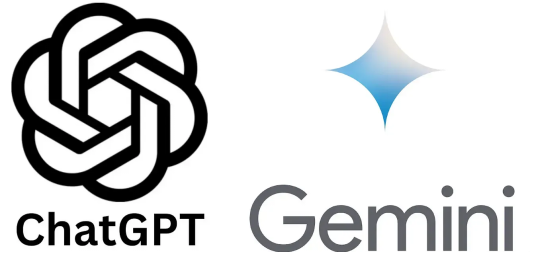
User Interface and Experience
ChatGPT offers a user-friendly and intuitive interface, especially beneficial for users new to AI language models. Its conversational style makes it easier to understand and engaging.
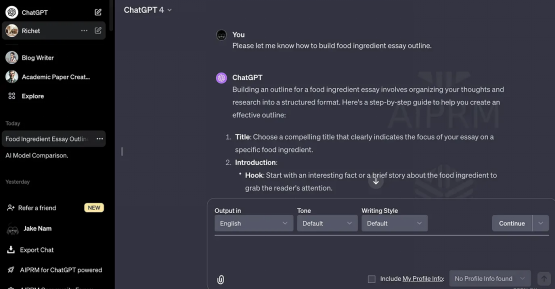
Google Gemini, integrated into various Google products, provides a seamless user experience, particularly for those already familiar with the Google ecosystem. Its interface is designed for efficiency and precision, catering to users seeking quick and accurate information.
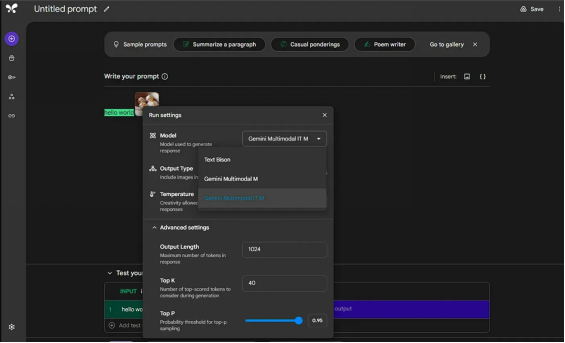
Alternatives to Google Gemini
AI chatbots have been around for a while, but in a variety of forms. Many startups have similar chatbot technology, and examples of Gemini’s competitors include:
ChatSonic
Marketed as a "super-powered ChatGPT alternative," it is an AI chatbot powered by Google search and equipped with the AI-based text generator Writesonic, enabling users to discuss topics in real-time to create text or images.
Claude
An AI chatbot by Anthropic named after its underlying LLM. It has undergone stringent testing to ensure it adheres to ethical AI standards, avoiding offensive or inaccurate outputs.
XXAI
Premier AI Copilot for GPT-4o & Claude 3.5. Get summaries, answers, polished writing, translations, drafts, and AI search wherever you work. Seamlessly switch between GPT-4o and Claude 3.5 for professional content, saving you hours daily.
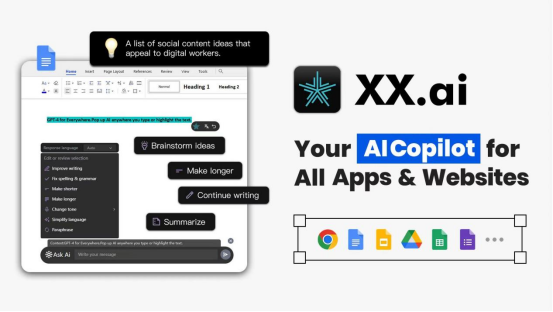
GitHub Copilot
Specifically for developers, providing code generation services. It aims to streamline cumbersome development tasks in modern software development. Although it's not for text generation, it’s an alternative to ChatGPT or Gemini for code generation.
Jasper Chat
Jasper Chat by Jasper.ai is a conversational AI tool focused on generating text. It targets companies looking to create brand-related content and conversations with clients. It allows content creators to specify SEO keywords and tone within prompts.
YouChat
An AI chatbot from the German search engine You.com. YouChat answers questions and provides cited answers for users to check sources and verify facts.
With the continuous advancement of AI technology, the prevalence of AI chatbots in daily life and business has significantly increased. Multimodal and multilingual capabilities are crucial directions for future development.
Advantages and Limitations of Google Gemini
Advantages of Google Gemini:
- Accuracy: Thanks to Google’s extensive data indexing, Google Gemini excels in precise information retrieval.
- Integrated with Google's Database: It can access Google's vast knowledge base seamlessly, providing users with an abundance of readily available information.
- Data-driven Insights: Ideal for research and analysis, it can process vast amounts of data to extract meaningful insights, useful for business and academic research.
- Efficiency: Gemini focuses on delivering concise and relevant information quickly, which is highly efficient for users needing fast answers.
Limitations of Google Gemini:
- Less Human-like Interaction: Unlike ChatGPT, Gemini's responses might focus more on data rather than conversation, which might be less engaging for customer service or casual chat applications.
- Integration Complexity: For users not familiar with the Google ecosystem, integrating and utilizing Gemini's full functionalities might be complex and daunting.
- Limited Creative Output: Gemini is less suited for tasks requiring creative language generation, such as novel writing or creative content development.
Future Development of Google Gemini
The future of Gemini is full of potential, with Google planning to further optimize its multimodal processing capabilities and enhance its application in more fields. Expected advancements include integrating more advanced features such as recognizing more languages, more efficient data processing, and applications on more devices.
- Comprehensive Data Analysis: Google Gemini is set to integrate more advanced data analysis tools, enhancing its ability to process and interpret large amounts of data quickly and accurately. This is particularly beneficial for complex research and analysis tasks.
- Seamless Integration with Google Ecosystem: Future iterations of Gemini are likely to integrate more closely with Google's wide range of services and platforms, making it a more unified and powerful tool for information retrieval and analysis.
- Real-time Information Processing: A focus for Gemini is enhancing its ability to process real-time data and insights, crucial in rapidly changing scenarios such as market trends or news dynamics.
Conclusion
Google Gemini is a powerful AI tool that not only represents an upgrade to Bard but also signifies an important step for Google in the AI domain. Despite some limitations, with continuous optimization and improvements, Gemini is poised to become a significant player in the AI field, driving further adoption and application of artificial intelligence.